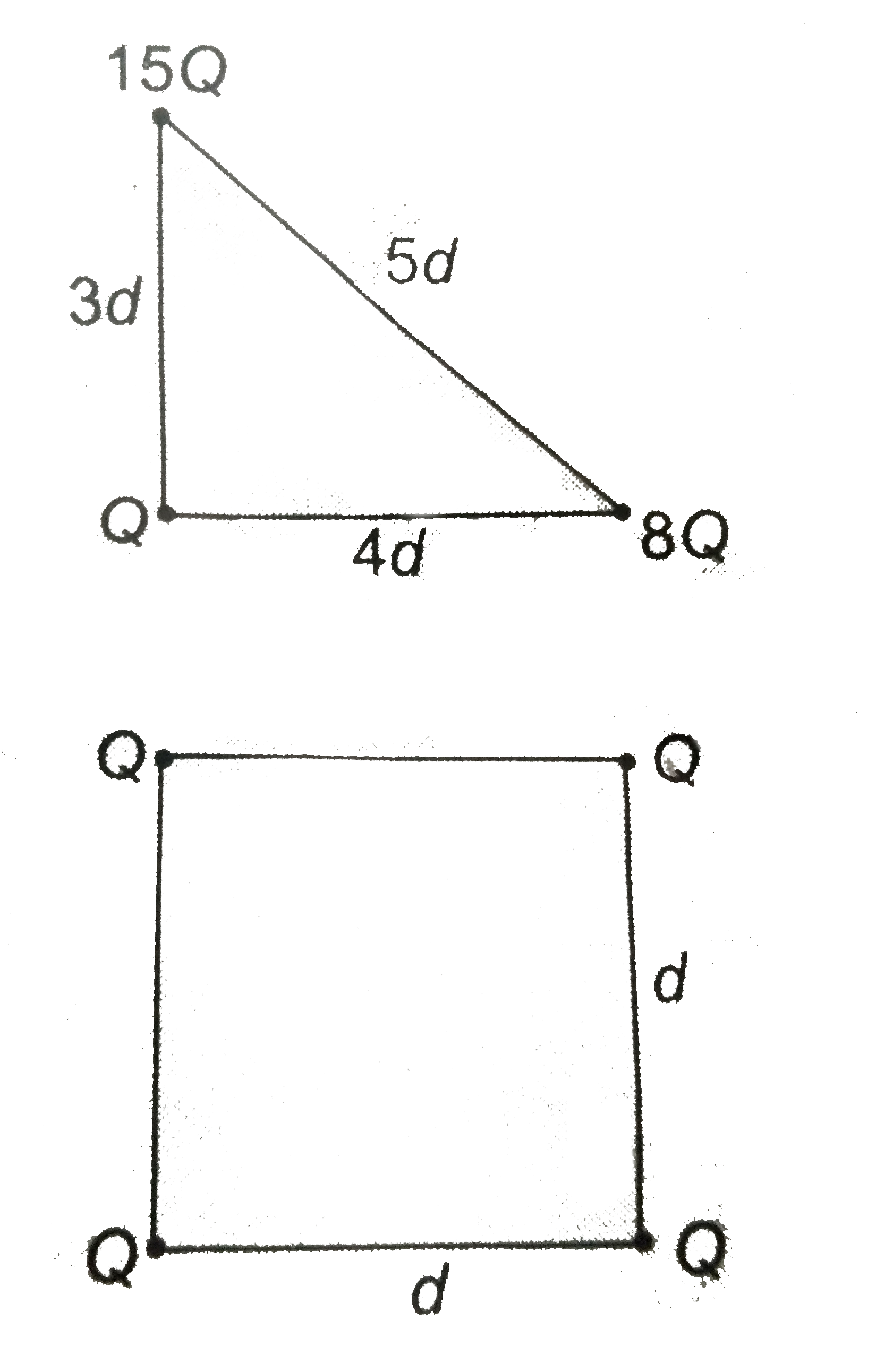A positively charged particle is released from rest in a uniform electric field. The electric potential energy of the charge.
remains constant because the electric field is uniform.
increases because the charge moves along the electric field.
decreases because the charge moves along the electric field.
decreases because the charge moves opposite to the electric field.
The correct Answer is:C
When a positively charged particle is released in a uniform electric field, it moves in the direction of the electric field. The relation between the magnitude of the electric field intensity (E ) and the electric potential (V) is given by, E=dVdr, By the above relation we can conclude that the electric potential decreases in the direction of the electric field. The electric potential energy of charged particle is given by,
U=qV
As V decreases on moving along the direction of the electric field thus, the electric potential energy (U) will also decrease as the charge moves in the direction of the electric field.
Topper's Solved these Questions
- BOOK - MODERN PUBLICATIONCHAPTER - ELECTROSTATIC POTENTIAL AND CAPACITANCE EXERCISE - Competition file (NCERT Exemplar Problems: Multiple Choice Questions Type-II)7videos
ELECTROSTATIC POTENTIAL AND CAPACITANCE
- BOOK - MODERN PUBLICATIONCHAPTER - ELECTROSTATIC POTENTIAL AND CAPACITANCE EXERCISE - Chapter Practice Test9videos
ELECTROSTATIC POTENTIAL AND CAPACITANCE
- BOOK - MODERN PUBLICATIONCHAPTER - ELECTROSTATIC POTENTIAL AND CAPACITANCE EXERCISE - Competition file (INTEGER TYPE QUESTIONS)10videos
ELECTROSTATIC POTENTIAL AND CAPACITANCE
- BOOK - MODERN PUBLICATIONCHAPTER - ELECTROMAGNETIC WAVESEXERCISE - CHAPTER PRACTICE TEST14videos
ELECTROMAGNETIC WAVES
- BOOK - MODERN PUBLICATIONCHAPTER - MAGNETISM AND MATTEREXERCISE - CHAPTER PRACTICE TEST FOR BOARD EXAMINATION16videos
MAGNETISM AND MATTER
Similar Questions
Find the electric potential energy of the system of charges.
(a) View Solution
View SolutionA proton is released from rest in a unifrom electric field. Does the proton's electric potential energy increase or decrease? Does the proton move towards a location with a higher or a lower electric potential.
View Solution
Knowledge Check
- Question 1 - Select One
A positively charged particle is released from rest in an uniform electric field. The electric potential energy of the charge
Aremains a constant because the electric field is uniform.Bincreases because the charge moves along the electric field.Cdecreases because the charge moves along the electric field.Ddecreases because the charge moves opposite to the electric field. - Question 2 - Select One
Two point charges having charge +Q, –q and mass M, m respectively are separated by a distance L. They are released from rest in a uniform electric field E. The electric field is parallel to line joining both the charges and is directed from negative to positive charge. For the separation between particles to remain constant, the value of L is
(K=14π∈0)A√(M+m)KQqE(qM+Qm)B√(M+m)KQqE(qm+QM)C√mMKQqE(qM+Qm)D√mMKQqE(QM+qm) - Question 3 - Select One
A charge particle is free to move in an electric field. It will travel
AAlways along a line forceBAlong a line of force, if its initial velocity is zeroCAlong a line of force, if has some initial velocity in the direction of an acute with the line of forceDNone of these
Assertion(A): Total work done by non-unifrom electric field on a charged particle starting from rest to any time is non-negative (Assume no other forces act on the charged particle)
Reason(R ):the angle between electrostatic force and velocity of the charged particle released from rest in non-uniform electric field is always acute. (Assume no other forces act on the charged particle)View SolutionA particle of mass and charge is released from rest in a uniform electric field. If there is no other force on the particle, the dependence of its kinetic energy on the distance travelled by it is correctly given by (graphs are schematic and not drawn to scale)
View SolutionA particle of mass m and charge −q is released from rest in a uniform electric field. If there is no other force on the particle, the dependence of its potential energy on the distance x travelled by it is correctly given by (assume initial potential energy to be zero ,graphs are schematic and not drawn to scale)
View SolutionA positive charge released from rest:
View SolutionA charged particle of mass m and charge e is released from rest in an electric field E. If kinetic energy of particle after time t is Ek and linear momentum is p, then
View Solution
